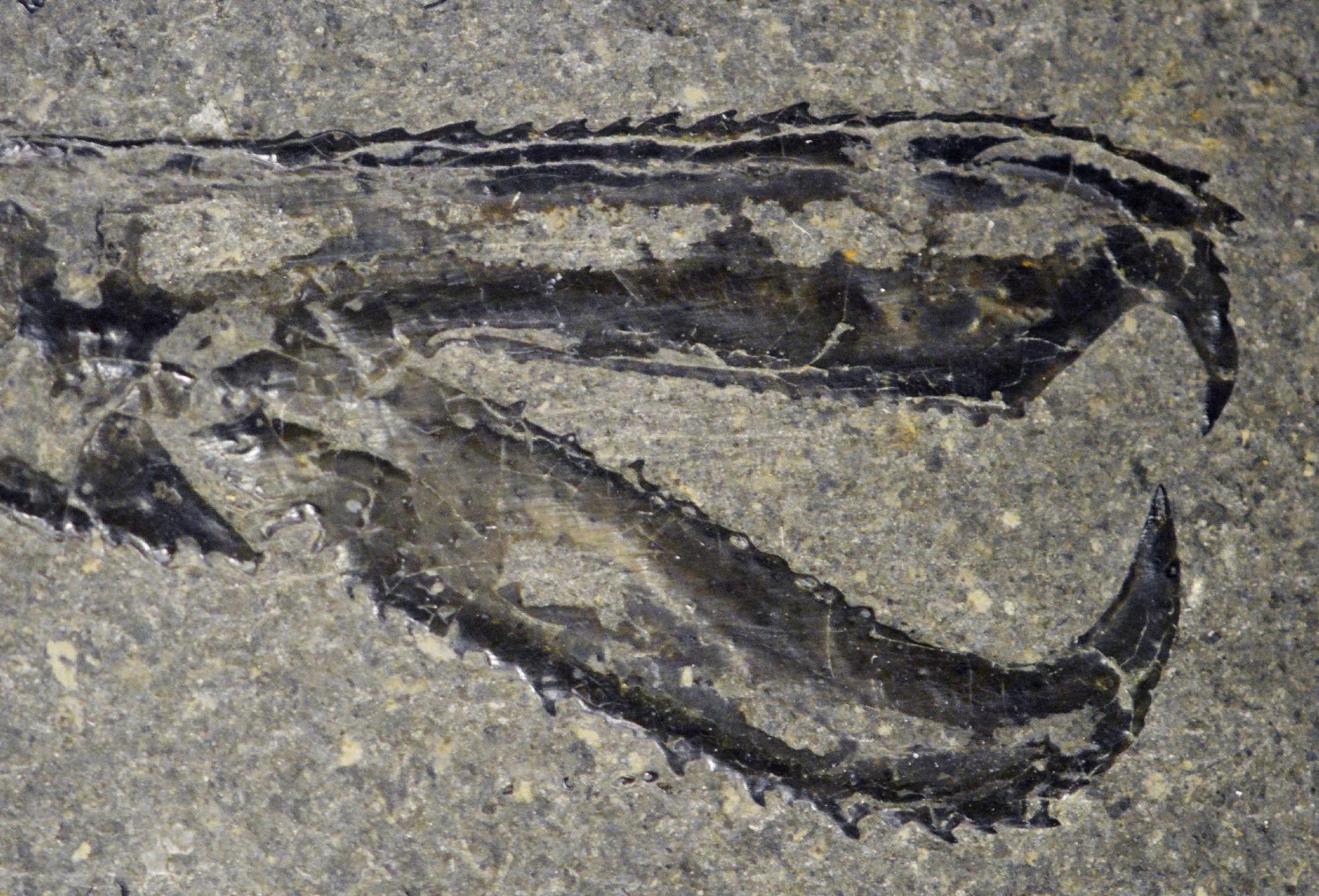Climate change can impact life on Earth. According to a new study, it can also influence the dead.
 A fossil of a crustacean claw exoskeleton from the Posidonia Shale in Germany. Image Credit: Drew Muscente.
A fossil of a crustacean claw exoskeleton from the Posidonia Shale in Germany. Image Credit: Drew Muscente.
A study of remarkably preserved fossils carried out by a graduate student at the University of Texas at Austin has discovered that rising global temperatures and a swiftly changing climate 183 million years ago may have developed fossilization conditions in the world’s oceans that facilitated the preservation of the soft and delicate bodies of dead marine animals.
The fossils include ornate crustacean claws, squid-like vampyropods with ink sacs and fish with undamaged gills and eye tissue.
Regardless of being from various locations and marine surroundings, the fossils were all preserved in a similar manner. Geochemical analysis showed that the conditions required to preserve such fascinating fossils could be linked to the Earth’s climate.
When I started the research, I had no idea if they would preserve the same way or a different way. I was curious what led to the exceptional preservation.
Sinjini Sinha, Study Lead Author and Graduate Student, Jackson School of Geosciences, University of Texas
The study has been published in the journal Scientific Reports.
Transitioning from deceased organism to eternal fossil is an intricate, chemical process that involves the development of minerals inside biological tissues. The researchers scrutinized various parts of fossil specimens using a scanning electron microscope fitted with a tool to identify chemical elements present in the minerals.
The fossils came from Strawberry Bank in southern England, the Posidonia Shale in southern Germany, and Ya Ha Tinda in Alberta, Canada. In all of them, one element was prominent: phosphorous.
We expected there to be some similarities, but finding that they were so similar was a bit surprising.
Rowan Martindale, Study Co-Author and Associate Professor, Jackson School of Geosciences, University of Texas
Phosphorous is typically found in bones, so detecting it in fossilized fish skeletons was not uncommon. But when it was present in tissues that do not typically contain phosphorous, such as crustacean exoskeletons and vampyropod soft tissues, it indicated that the environment was the basis of the phosphorous minerals.
Phosphorous, however, is not ordinarily present in high concentrations within sea sediments, said co-author Drew Muscente, an assistant professor at Cornell College and former Jackson School postdoctoral researcher.
Phosphorous is an element that you don’t expect to see in sedimentary rocks. It generally doesn’t get buried in large amounts except in unusual circumstances.
Drew Muscente, Study Co-Author and Assistant Professor, Cornell College
The scientists believe a period of extreme and quick climate change caused by a spurt of greenhouse gasses into the atmosphere because of volcanic eruptions during the Early Jurassic could be just that condition, with the rising temperatures causing more rainfall that eroded large quantities of phosphorus-rich sediment from rocks on land into the oceans worldwide.
Climate change, at present, is also decreasing oxygen in the oceans but it will be millions of years before any person can say whether there is an increase in extraordinary fossils, Martindale said.
Javier Luque, a research associate at Harvard University who did not take part in the research, said that the study is significant because it proposes that past climate change could have helped facilitate fossilization in a range of environments.
Perhaps one of the biggest takeaways of this work is that global events in the past could have set the stage for the exceptional preservation seen in fossil-rich marine deposits around the world regardless of their location, lithologies, environments, and depositional setting.
Javier Luque, Research Associate, Harvard University
The research was also co-authored by scientists at the University of Missouri, the Bath Royal Literary and Scientific Institution, and the Stuttgart State Museum of Natural History.
The research received funding from the National Science Foundation Division of Earth Sciences.
Journal Reference:
Sinha, S., et al. (2021) Global controls on phosphatization of fossils during the Toarcian Oceanic Anoxic Event. Scientific Reports. doi.org/10.1038/s41598-021-03482-7.